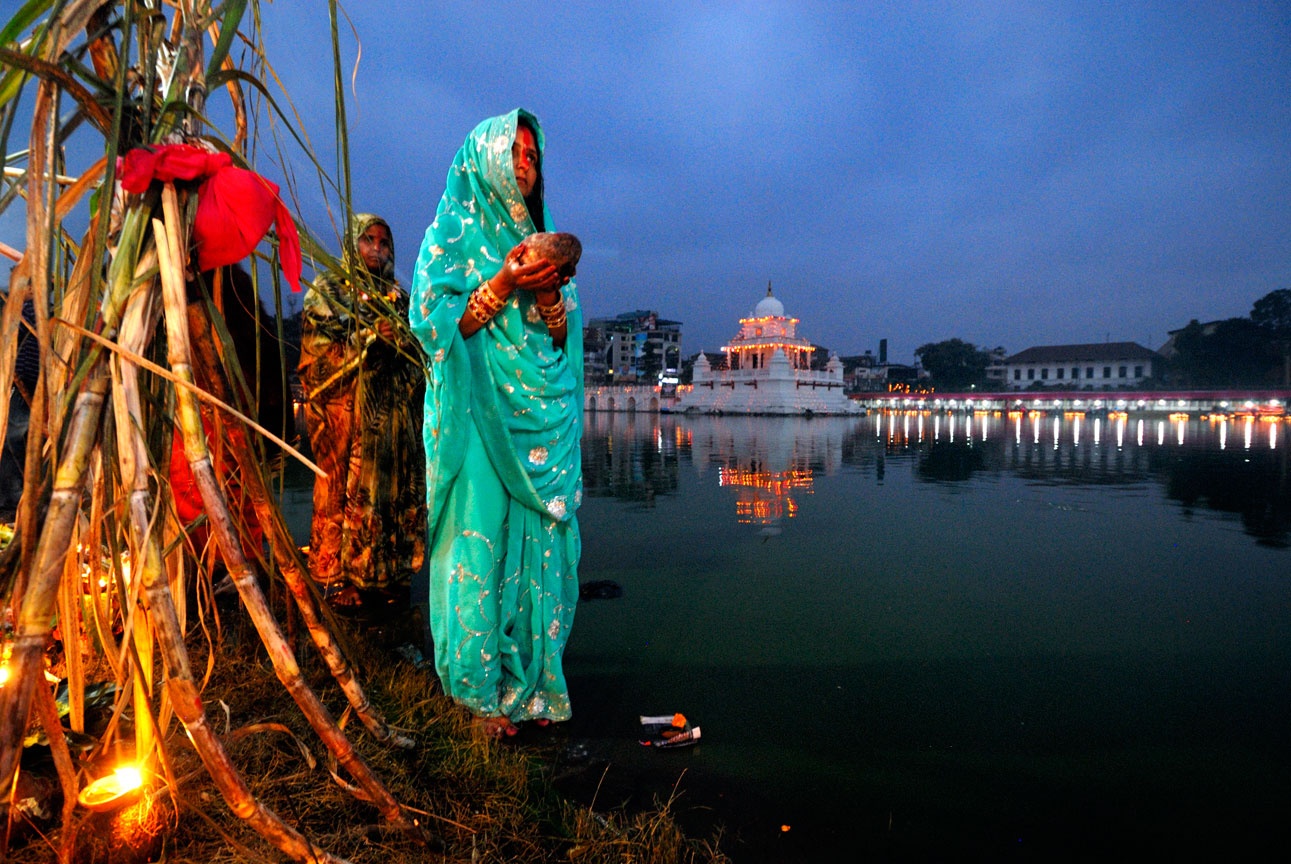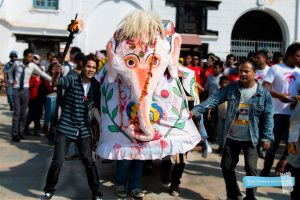
Statistically speaking, Chhath Puja is the third most popular festival event in Nepal with a high concentration among the people of the Terai region. It occurs after Dashain and Tihar which are the biggest festivals in the nation and it is also observed with similar magnificence and devotion particularly from November 11 to 14.
This festivity is observed for the God of the Sun, Surya, and his complimentary wife, Chhathi Maiya. While the festivity is mostly celebrated in the Indian states of Bihar, Jharkhand and eastern Uttar Pradesh, it also has a rich cultural practice in Chhath Puja within the southern Terai plains of Nepal. Incredibly, this religion is gaining momentum in other Nepali regions as well, especially in the capital Kathmandu.
If you are in Kathmandu for the festival, you may need to visit some places such as the banks of the Bagmati River or the Ranipokhari pond, to witness how the celebration is done. Nevertheless, the best definition of Chhath Puja would be found in the core parts of the Terai region, more so in the bigger towns like Birgunj, Janakpur, and Biratnagar. In such places, the observance is much more intense as many people, or rather families take part in the ceremonies with zest and zeal.
Rituals and Significance of Chhath Puja
This festival is largely performed by women, who keep fasts and perform various rites beside sacred rivers/ponds waiting for the sun to rise. The duration of this festival is four days, where each day has its own rituals and traditions.
- First Day: Nahai-Khai
The initial day is referred to as Nahai-Khai, which can be interpreted as ‘cleanse and dine’. On this day, devotees known as vrattis commence the occasion by first taking a dip in a holy river or a pond. This activity cleanses them in a physical and more importantly in a spiritual way. Then, they have a plain meal consisting of rice, dal, and some vegetables to signify the start of the fasting period. This meal is eaten by the devotees as it is pure and helps them in the preparation of fasting that is to follow physical abstinence deigned. - Second Day: Kharna
The day that follows is referred to as Kharna, which requires the vratti’s to keep a fast from sunrise to sunset. Even drinking of water is restricted during this time. This day is also a preparatory day for the main day of Chhath Puja, where people get busy in buying things such as sugarcane, fruits and other items which will be used in the following rituals. In the evening, after breaking the fast, the vratti’s make a special offering known as prasad that is offered to Chhathi Maiya. The prasad contains different kind of sweet dishes which is then distributed to the members of the family. One of the most relevant items in this prasad is *thekua’, a sweet preparation made from flour, sugar or jaggery and ghee which plays a pivotal role in the ceremony. - Third Day: Sandhya Arghya
Overall, the third day of the festival is devoted more to the final day of the festival than to the previous or the second day. Vrattis and their families are engaged in last-minute preparations for the main ritual and other pujas, known as Sandhya Arghya, the evening offering. In this offering, they go to the shore of rivers or ponds and praise the sun when it is about to set. A special religious structure made of five sugarcane sticks and covered with yellow cloth is among the props used in this offering. This structure serves the purpose of lighting the lamps inside it while elephant-shaped clay pieces are kept of the puja. This offering is referred to as the Kosi and is very important for relatives as in the case for newly wed couples or those who have slightly become parents.
In the evening, the vrattis supplicate before the sun and make their offerings beneath the dome. Later, they go back to their houses to get ready for the ultimate day of the festival which is of equal significance. - Fourth Day: Bihaniya Arghya
On the last day of Chhath Puja, also known as the Bihaniya Arghya or morning offering day, he and his family members wake up before the dawn and make their way towards the riverbanks. They wait on the banks for the sun to come up. When the sun dawns and the first rays of the sun appear, they prayers and plunge into the water performing the Bihaniya Arghya. It is the final section of the ritual performed to pay thanks to Lord Surya for giving life and energy to this universe.
After all the morning rituals have been performed, wratis return back to their houses and then eat for the first time in that day. As per the custom, the fasting is first broken by taking ginger and water before having a sumptuous meal with the family. It consists of various treats in most cases and is the meal served just before the end of the prohibition on food intake and the successful performance of Chhath Puja rites.
The Cultural Importance of Chhath Puja
The canonization of Chhath Puja is of utmost pertinence and appreciation by majority of adherents residing in the culture of the Terai region amongst other regions of Nepal where it is practiced. November is a period of worship, family connection, and inner tranquility. It is practiced the other way around since the fasting and the rituals get colored in worshiping and appreciating the environment and the importance of the sun for habitation on this planet.
As urbanization is on the rise, cities such as Kathmandu are commemorating Chhath Puja indicating the increasing awareness of the practice in Nepal. This is because, a large number of people from Terai regions have been moving to cities for jobs and education, thus carrying along their customs. As a result, those areas where the festival wasn’t celebrated before, began to do so. It has also contributed to a better understanding of the cultural diversity of folds in Nepal.
To summarize, Chhath Puja is a remarkable and colorful festival that worships the Sun God and his important significance to existence. This period is set aside for respect and family reunion with a religious focus wherever one belongs. The prayers and incantations may appear ornamental but are actually very minimalist in nature and are only meant to thank Mother Nature. For very few people who have not been part of the Chhath Puja festival, it is on great sacredness and rich cultural ethics where the visitors of celebration sites will embrace the festive period.
Watch a video on Chhath Puja @ https://www.youtube.com/watch?v=JN9CwYr_2dY




